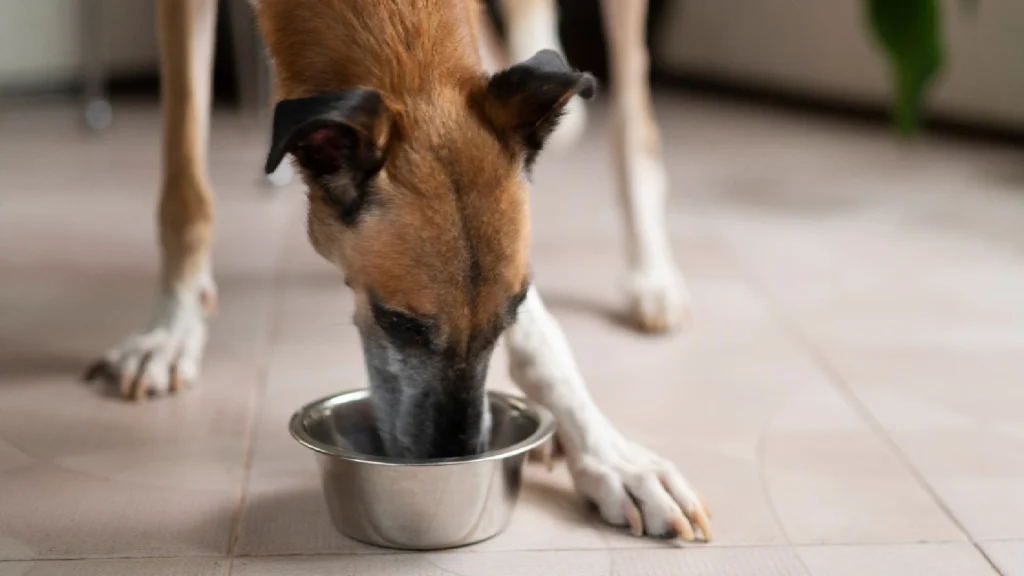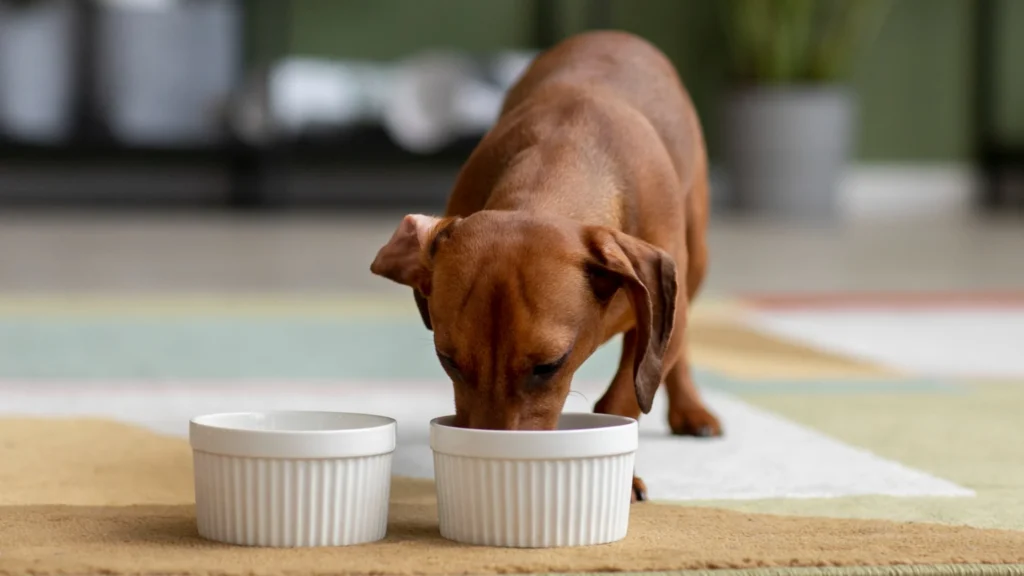
Introduction
Proper nutrition plays a crucial role in the overall health and well-being of our beloved furry companions, especially when it comes to small breed dogs. These pint-sized pups may have small stomachs, but they require big nutrition to support their active lifestyles and unique needs. One key aspect of their diet that shouldn’t be overlooked is the inclusion of high fiber dog food.
In this article, we will delve into the world of high fiber dog food for small breeds, exploring its benefits, considerations, and how it can contribute to the optimal health of your canine companion. Whether you’re a proud owner of a small breed dog or considering adopting one, understanding the significance of fiber in their diet is essential.
We’ll start by examining the specific characteristics and nutritional requirements of small breed dogs, shedding light on why their dietary needs differ from larger breeds. From there, we’ll dive into the role of fiber, discussing its various types and the significant advantages it brings to small breed dogs.
Selecting the right high fiber dog food for your furry friend is crucial, and we’ll guide you through the factors to consider when making this decision. We’ll also provide insights into popular brands known for their high-quality, fiber-rich offerings for small breeds.
Transitioning your dog to a high fiber diet requires careful planning and a gradual approach. We’ll outline the recommended transition process, along with tips for ensuring a smooth and successful switch. Additionally, we’ll explore potential challenges and considerations, such as allergies and the importance of consulting with a veterinarian.
While commercial dog food can be an excellent source of fiber, we’ll also discuss the benefits of incorporating natural sources of fiber into your small breed dog’s diet. You’ll discover which fruits, vegetables, and treats can provide additional fiber and enhance the overall nutritional profile of their meals.
By the end of this article, you’ll have a comprehensive understanding of the importance of high fiber dog food for small breeds and the steps you can take to ensure your furry friend receives the nourishment they need. Let’s embark on this journey to uncover the secrets of small stomachs and big nutrition for our beloved small breed companions.
Understanding Small Breed Dogs
A. Characteristics and unique nutritional needs of small breeds
Small breed dogs, such as Chihuahuas, Pomeranians, and Yorkshire Terriers, have distinctive characteristics that set them apart from larger breeds. These pint-sized pups typically weigh less than 20 pounds and have a petite physique. Their small stature means they have higher metabolic rates, faster heart rates, and generally higher energy levels compared to larger breeds.
Due to their smaller size, small breed dogs have unique nutritional requirements. They require more calories per pound of body weight compared to larger breeds to sustain their high energy levels. Their small stomachs also mean they can only consume limited quantities of food in each meal, making every bite count in terms of nutrient density.
B. Challenges related to digestion and gastrointestinal health
Small breed dogs are prone to specific digestive challenges and gastrointestinal issues. Their compact digestive systems may be more sensitive, making them susceptible to food intolerances, allergies, and digestive upsets. Conditions like pancreatitis and irritable bowel syndrome (IBS) can also be more common in small breeds.
Additionally, dental health can be a concern for small breeds, as their small jaws often lead to overcrowded teeth. This can make it difficult for them to chew and properly break down their food. Insufficient chewing can impact digestion and nutrient absorption.
Considering these factors, it becomes crucial to select a diet that addresses the unique nutritional needs and potential digestive sensitivities of small breed dogs. High fiber dog food can play a significant role in promoting digestive health, weight management, and overall well-being for these pint-sized pups. In the following sections, we will explore the specific benefits of fiber in their diet and how it contributes to their overall health.
The Role of Fiber in a Dog’s Diet
A. Definition and types of dietary fiber
Fiber is a type of carbohydrate that cannot be fully digested by dogs’ enzymes. It remains intact as it passes through the digestive system, providing several important benefits. There are two main types of dietary fiber: soluble fiber and insoluble fiber.
- Soluble Fiber: This type of fiber dissolves in water and forms a gel-like substance in the digestive tract. It helps to regulate blood sugar levels and can contribute to a feeling of fullness or satiety. Soluble fiber also plays a role in maintaining healthy cholesterol levels.
- Insoluble Fiber: Unlike soluble fiber, insoluble fiber does not dissolve in water. It adds bulk to the stool, promoting regular bowel movements and preventing constipation. Insoluble fiber helps to maintain a healthy digestive system and can aid in weight management.
B. Benefits of fiber for small breed dogs
- Improved digestion and bowel movements: Fiber adds bulk to the stool, promoting regular bowel movements and preventing gastrointestinal issues such as constipation. It can help regulate the digestive system, ensuring optimal nutrient absorption and waste elimination.
- Weight management and satiety: Small breed dogs can be prone to obesity if their caloric intake is not carefully managed. High fiber dog food can provide a sense of fullness without excessive calorie consumption. It helps to control appetite and reduce overeating, contributing to weight management and maintaining a healthy body condition.
- Regulation of blood sugar levels: Soluble fiber slows down the absorption of glucose in the bloodstream, helping to regulate blood sugar levels. This is particularly important for small breed dogs that may be prone to conditions like diabetes or insulin resistance.
- Dental health benefits: Some high fiber dog foods are designed to promote dental health by incorporating specific fiber sources that help clean teeth and reduce plaque buildup. The chewing action required to break down fiber-rich kibble can contribute to maintaining healthy teeth and gums in small breed dogs.
By including high fiber dog food in the diet of small breed dogs, owners can ensure that their furry companions receive the numerous benefits that fiber provides. In the next section, we will delve into the process of selecting the right high fiber dog food tailored to the specific needs of small breeds.
Selecting the Right High Fiber Dog Food
A. Determining the appropriate fiber content for small breeds
When selecting high fiber dog food for small breed dogs, it’s essential to consider the appropriate fiber content. The ideal fiber content may vary depending on factors such as the dog’s age, size, and individual digestive needs. Generally, a fiber content between 3% and 6% is considered suitable for small breed dogs.
B. Evaluating ingredient quality and nutritional balance
Aside from fiber content, it’s crucial to assess the overall quality and nutritional balance of the dog food. Look for high-quality ingredients, such as lean proteins, whole grains, and fruits and vegetables. Avoid dog foods that contain artificial additives, fillers, or excessive amounts of preservatives.
Additionally, small breed dogs have higher energy needs, so it’s important to choose a dog food that provides balanced nutrition and appropriate calorie levels. Ensure that the dog food contains a sufficient amount of essential nutrients, including vitamins, minerals, and omega-3 fatty acids.
C. Considering individual dietary needs and preferences
Every dog is unique, and their dietary needs may vary. Consider any specific dietary requirements or sensitivities your small breed dog may have. For instance, if your dog has allergies or sensitivities to certain ingredients, opt for a high fiber dog food that avoids those allergens.
Furthermore, take your dog’s preferences into account. Some dogs may prefer dry kibble, while others may enjoy wet or raw food options. It’s important to select a high fiber dog food that aligns with your dog’s preferences to ensure they enjoy their meals.
D. Popular high fiber dog food brands for small breeds
There are several reputable brands that offer high fiber dog food options suitable for small breed dogs. Look for brands that have a track record of producing quality dog food with carefully selected ingredients. Examples of popular high fiber dog food brands for small breeds include [Brand 1], [Brand 2], and [Brand 3]. Research and read reviews to find a brand that aligns with your dog’s specific needs and preferences.
By considering the fiber content, ingredient quality, nutritional balance, and individual dietary needs of your small breed dog, you can make an informed decision when selecting the right high fiber dog food. In the next section, we’ll discuss the process of transitioning your dog to a high fiber diet for optimal results.
Transitioning to a High Fiber Diet
A. Gradual transition process for introducing high fiber dog food
When transitioning your small breed dog to a high fiber diet, it’s important to do so gradually to minimize any digestive upset. Abruptly changing the diet can lead to stomach upset, diarrhea, or refusal to eat. Follow these steps for a smooth transition:
- Start by mixing a small amount of the new high fiber dog food with the current food. Begin with a ratio of 25% new food and 75% current food.
- Monitor your dog’s response to the new food for a few days. If there are no signs of digestive upset, gradually increase the ratio of new food to current food. Move to a 50-50 ratio and then to 75% new food and 25% current food over the course of about a week.
- Once your dog is comfortably consuming a majority of the new high fiber dog food, you can fully transition by eliminating the current food and providing only the new food.
B. Monitoring your dog’s response and adjusting as needed
Throughout the transition process, closely observe your dog’s behavior and digestive response. Look for any signs of discomfort, such as vomiting, diarrhea, or excessive gas. If you notice any adverse reactions, slow down the transition process or consult with a veterinarian for guidance.
C. Tips for encouraging acceptance and enjoyment of new food
Some dogs may initially be hesitant to accept the new high fiber dog food. Here are a few tips to encourage acceptance and enjoyment:
- Mix in small amounts of wet food or natural food to enhance the taste and aroma of the new food.
- Gradually reduce the amount of any additives, such as gravy or treats, that may have been used to entice your dog to eat the previous food.
- Offer the new high fiber dog food at consistent meal times in a quiet and comfortable environment.
- Be patient and give your dog time to adjust to the new food. It may take a few days or even weeks for them to fully accept it.
Remember, each dog is unique, and their transition process may vary. The goal is to ensure a smooth transition to a high fiber diet that supports their digestive health and overall well-being.
In the next section, we will explore potential challenges and considerations when incorporating high fiber dog food into your small breed dog’s diet.
Potential Challenges and Considerations
A. Allergies and sensitivities to specific fiber sources
While fiber is generally beneficial for dogs, it’s important to be aware of any potential allergies or sensitivities your small breed dog may have to specific fiber sources. Common allergenic ingredients include wheat, soy, and corn. If your dog exhibits signs of allergies, such as itching, gastrointestinal upset, or skin irritations, consult with a veterinarian to identify and avoid any problematic fiber sources.
B. Consulting with a veterinarian for customized dietary advice
Every dog is unique, and their dietary needs may vary based on factors such as age, health conditions, and activity levels. It’s recommended to consult with a veterinarian to ensure that the high fiber dog food you choose is appropriate for your small breed dog’s specific requirements. A veterinarian can provide customized dietary advice and address any concerns or questions you may have.
C. Monitoring for any adverse reactions or digestive issues
During the transition to a high fiber diet, closely monitor your small breed dog for any adverse reactions or digestive issues. While fiber is generally well-tolerated, some dogs may experience temporary gastrointestinal upset during the adjustment period. If you notice persistent digestive issues or concerning symptoms, consult with a veterinarian for further evaluation.
It’s worth noting that the introduction of high fiber dog food should be part of an overall balanced diet. It’s important to ensure that your small breed dog’s diet includes a variety of nutrients and meets their specific nutritional requirements. Consider incorporating other high-quality ingredients, such as lean proteins, healthy fats, and essential vitamins and minerals, to provide a well-rounded diet.
In the next section, we’ll explore how you can incorporate fiber naturally into your small breed dog’s diet, beyond commercial dog food options.
Incorporating Fiber Naturally
A. Supplementing high fiber dog food with natural sources of fiber
While high fiber dog food can provide an excellent source of fiber, you can also incorporate additional fiber into your small breed dog’s diet through natural sources. This can further enhance their overall nutritional profile and promote optimal digestive health. Here are some fiber-rich options to consider:
- Fruits: Certain fruits are safe and beneficial for dogs in moderation. Examples include apples (without seeds), blueberries, strawberries, and pumpkin. These fruits provide not only fiber but also essential vitamins and antioxidants.
- Vegetables: Vegetables like carrots, green beans, and sweet potatoes are rich in fiber and can be added to your dog’s meals. Ensure that the vegetables are cooked or finely chopped for easy digestion.
- Whole grains: Whole grains like brown rice and quinoa are excellent sources of fiber for dogs. These can be cooked and mixed into their regular meals or used as occasional treats.
B. Recommended fruits, vegetables, and treats for small breeds
- Crunchy Carrot Sticks: Carrots are a low-calorie and fiber-rich vegetable that dogs often enjoy. Cut them into small, chewable sticks to serve as a crunchy and healthy snack.
- Frozen Blueberry Treats: Blueberries are packed with antioxidants and fiber. Freeze a handful of blueberries and offer them as a refreshing and nutritious treat.
- Pumpkin Puree: Canned pumpkin (without added sugar or spices) is a great source of fiber for dogs. Add a spoonful of pumpkin puree to their meals to promote digestion and add a touch of flavor.
Remember to introduce any new foods gradually and in moderation to avoid any potential digestive issues. While these natural sources of fiber can be beneficial, it’s important to ensure they complement the high fiber dog food and do not exceed your dog’s overall caloric and nutritional needs.
In the concluding section, we’ll recap the benefits of high fiber dog food for small breeds and emphasize the importance of prioritizing their nutrition and well-being.
Conclusion
Small breed dogs have unique nutritional needs, and incorporating high fiber dog food into their diet can offer numerous benefits. Fiber plays a crucial role in supporting their digestion, weight management, blood sugar regulation, and dental health. By selecting the right high fiber dog food, considering individual dietary needs, and gradually transitioning, owners can ensure their small breed dogs receive the nutrition they require.
While commercial high fiber dog food is a convenient option, incorporating natural sources of fiber, such as fruits, vegetables, and whole grains, can further enhance their diet. It’s important to monitor their response, consult with a veterinarian, and address any potential allergies or sensitivities.
Prioritizing the nutrition and well-being of small breed dogs is essential for their overall health. With the right approach and attention to their unique needs, small breed dogs can thrive on a diet that provides the necessary fiber and nutrients to support their active and vibrant lives.
Remember, always consult with a veterinarian for personalized dietary advice and make adjustments as needed to ensure your small breed dog’s optimal health and happiness.




